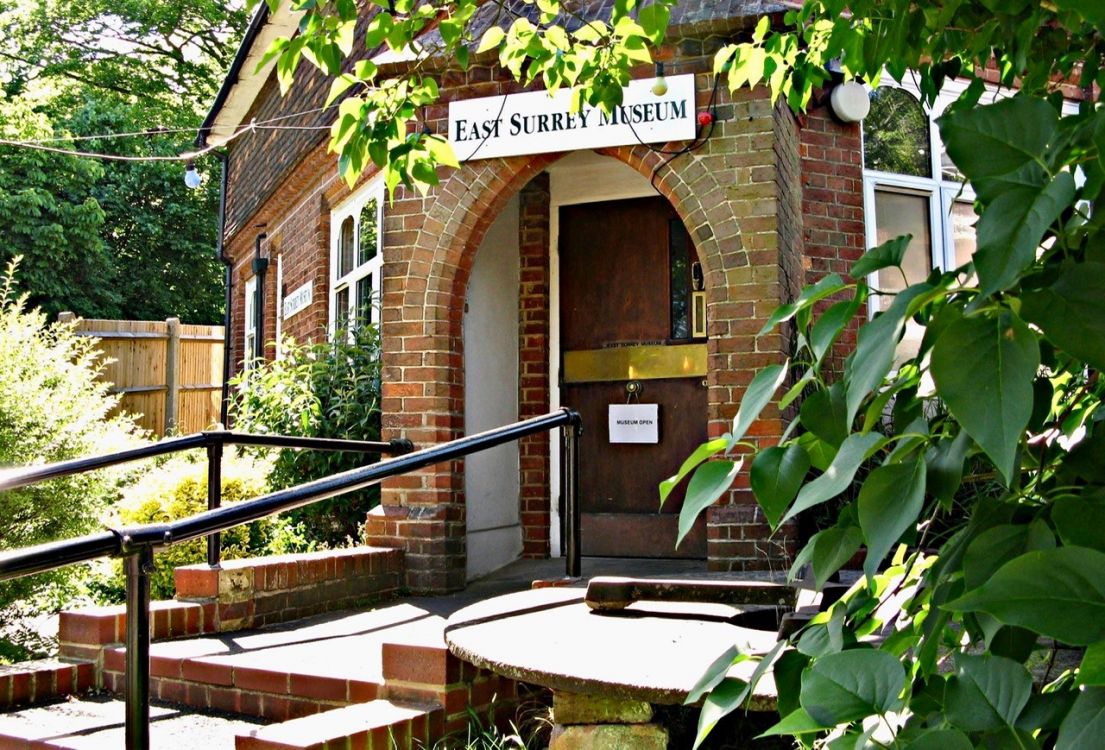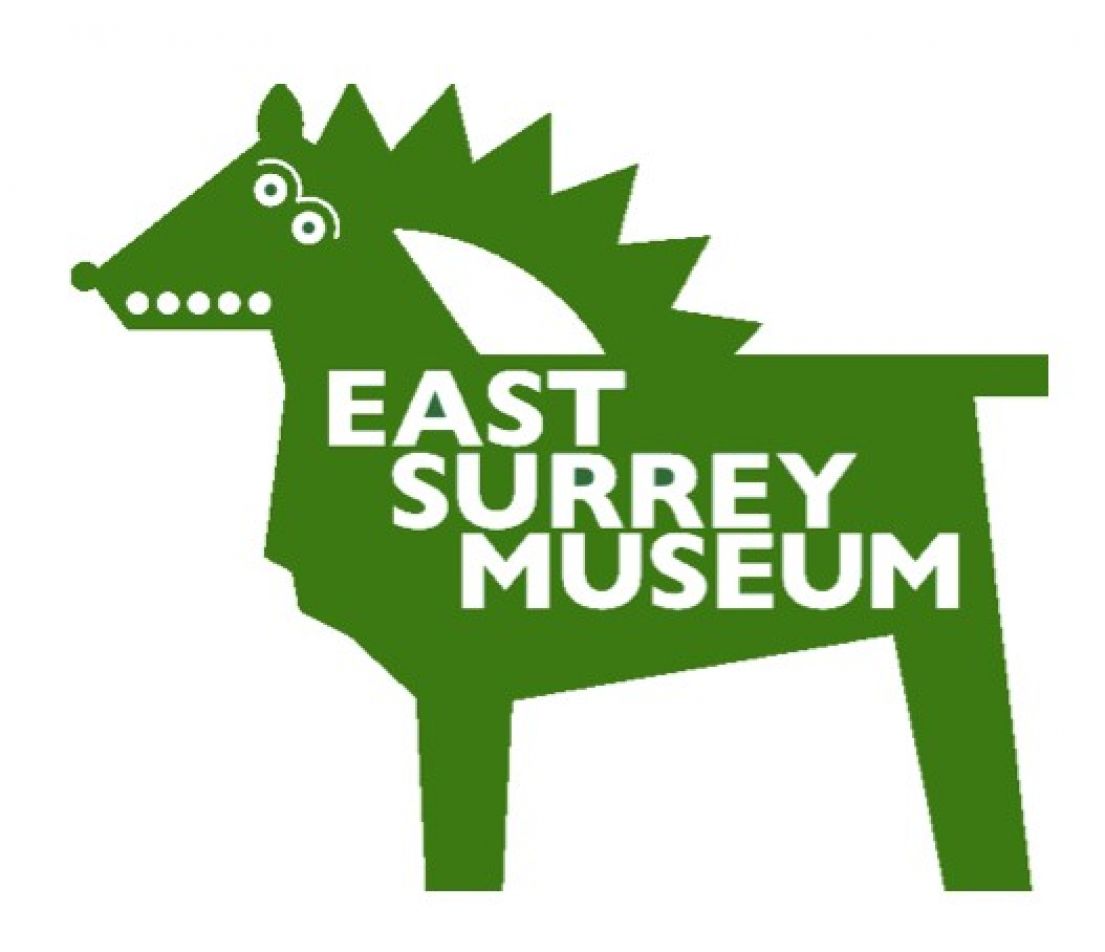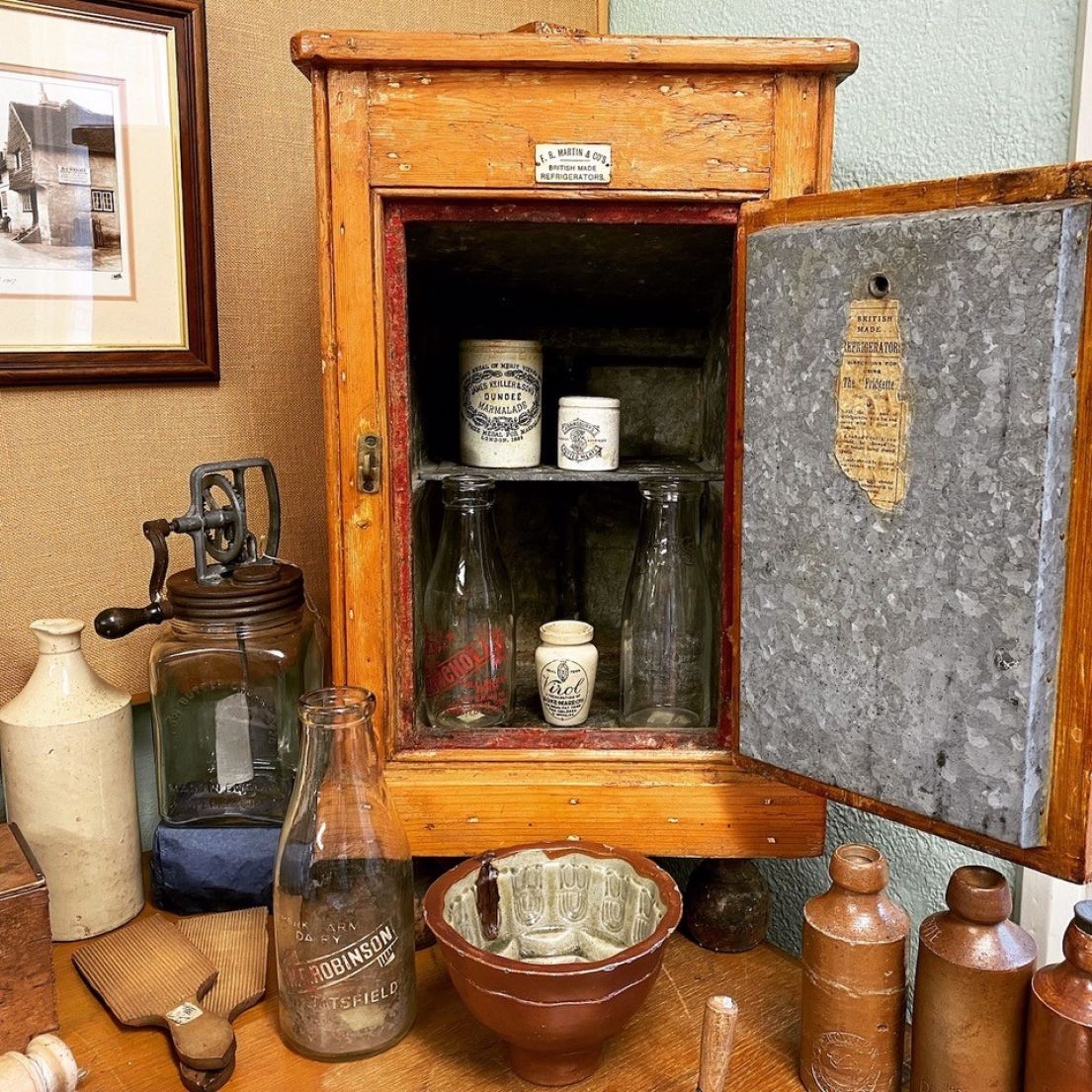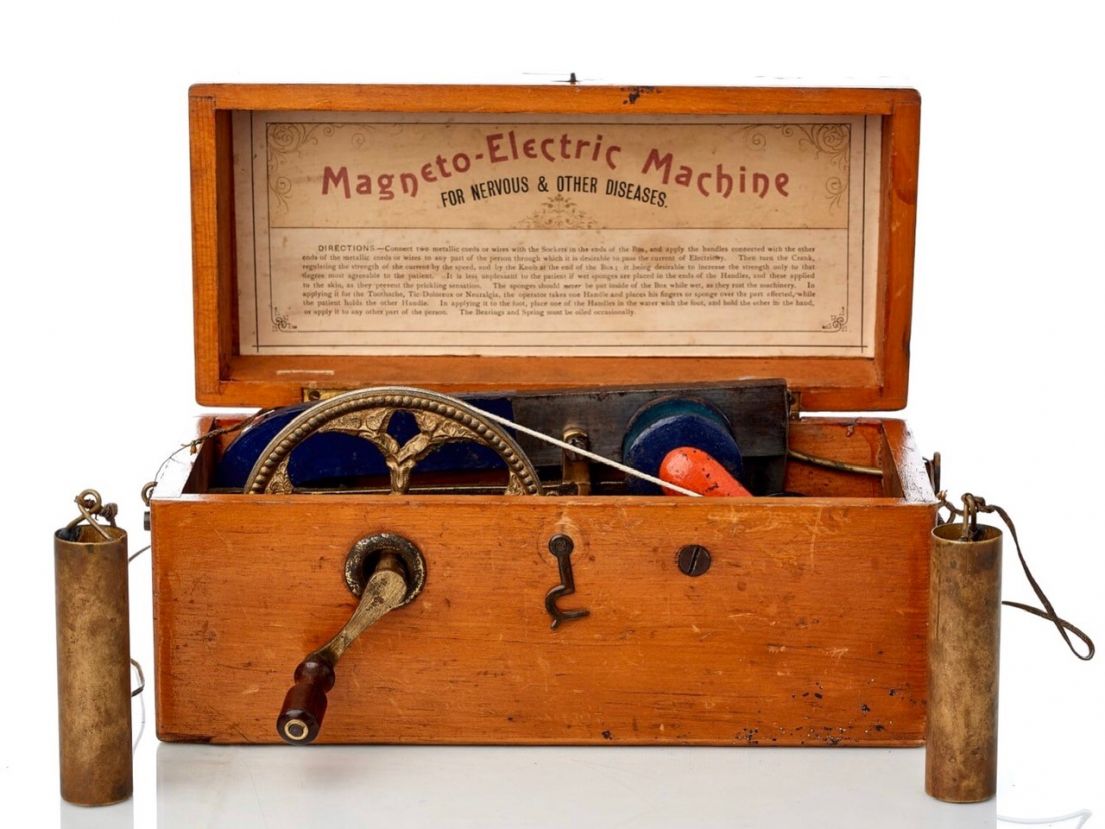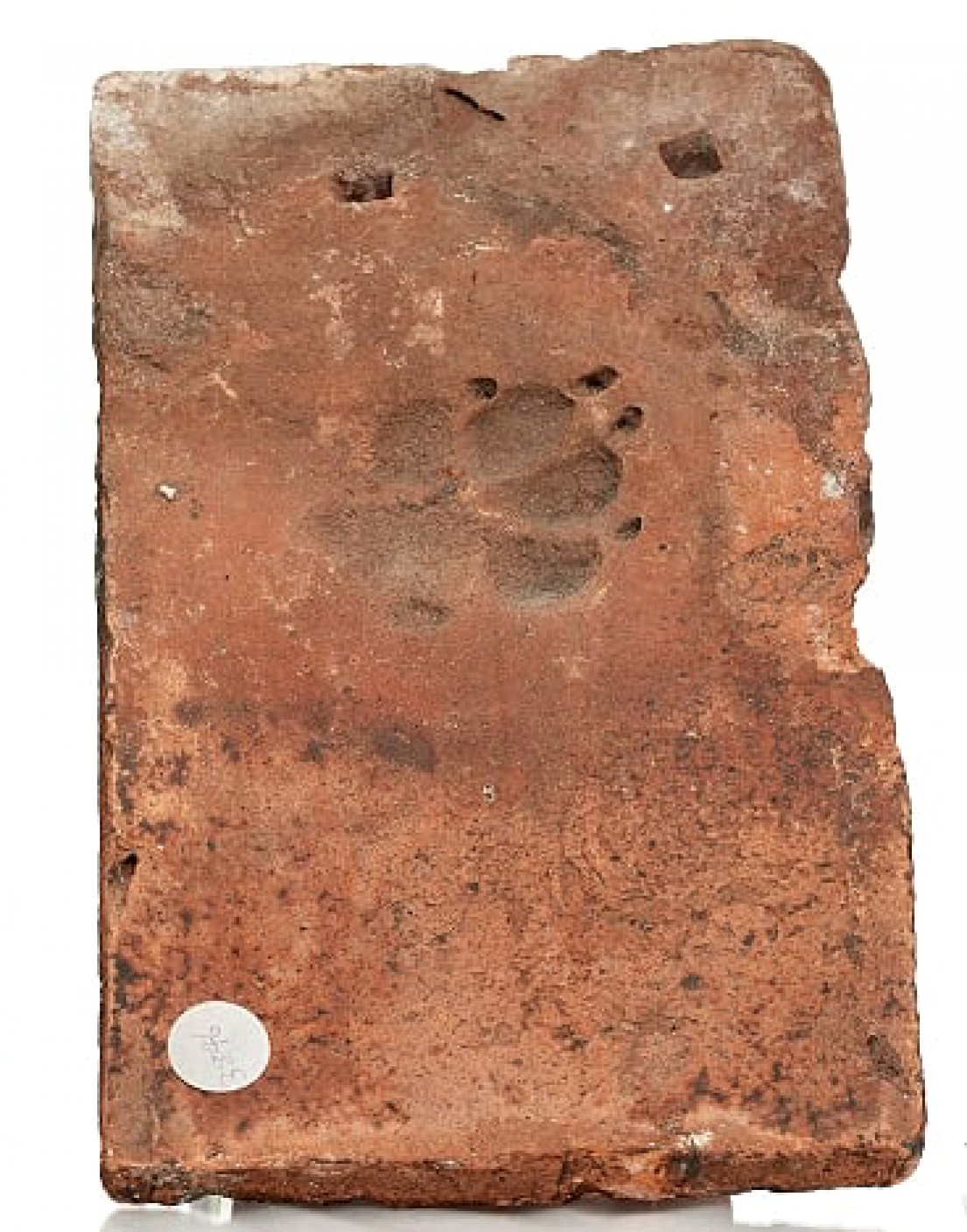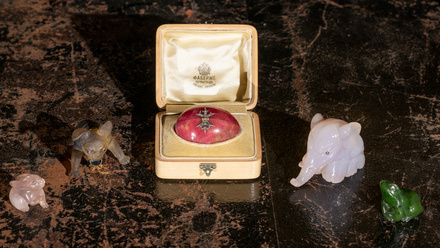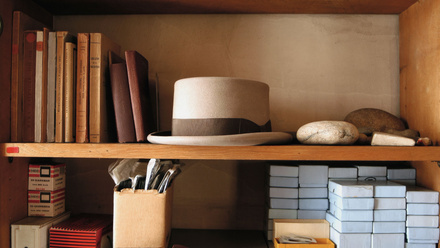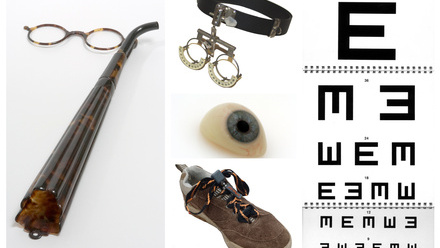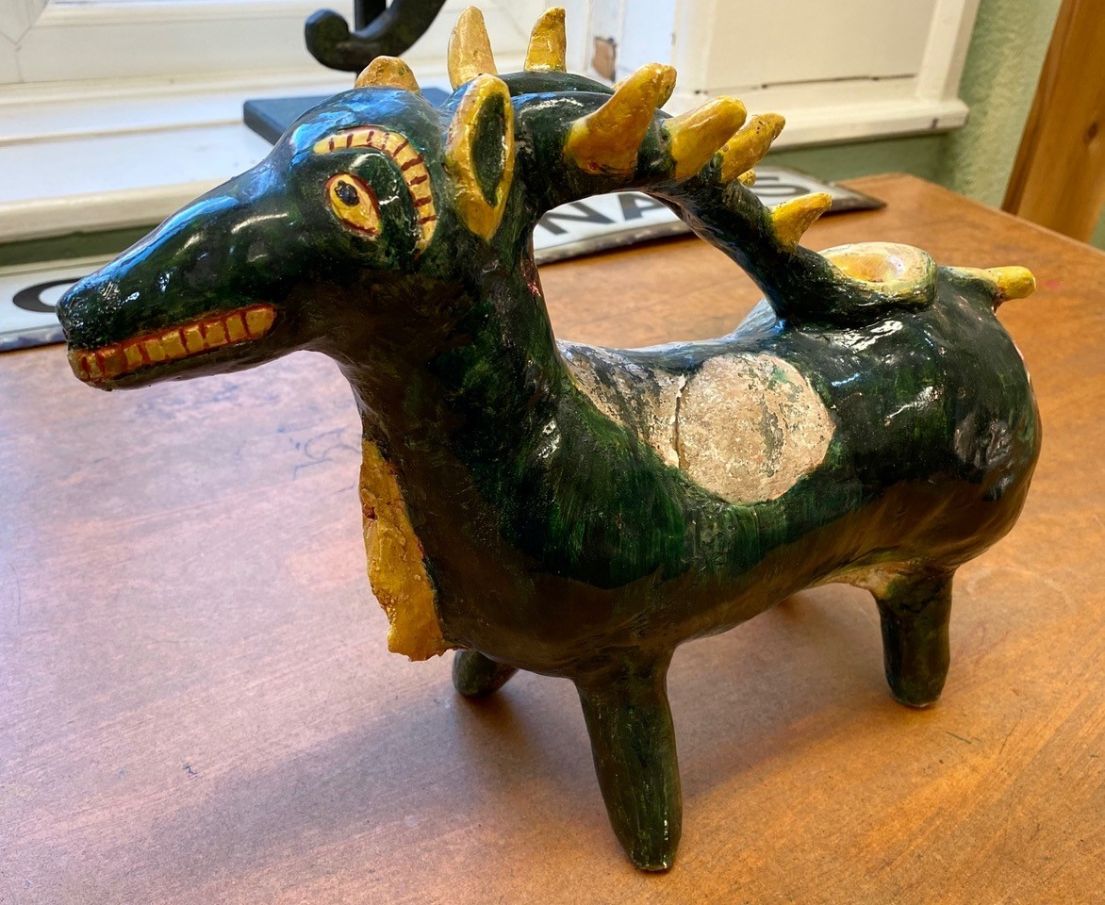
Introducing East Surrey Museum
Local museums are a treasure trove. Nestled in the middle of town, in a beautiful old building with its own intriguing history. Packed to the hilts with unearthed artefacts, stories, and items that might seem random if left anywhere else. Adorned with a crew of passionate volunteers happy to share their knowledge.
5 Remarkable Objects
1. Rudolf the Museum Mascot
Is there a better place to start than our Museum Mascot? Rudolf is a reconstructed Medieval aquamanile – a water jug used by upper-class households at meals to wash their hands, with water poured out through its nose.
2. The “Fridgette”
3. Magneto Electric Machine
4. Stuffed crocodile
Who would have thought a stuffed crocodile would find its way to a local museum in Surrey? Though it now has a permanent place in one of our rooms, how exactly it found its way there remains a mystery. Even after some digging, there doesn’t seem to be any concrete information on its origins.
5. Paw print tiles
For this year’s Heritage Open Days, East Surrey Museum joined a Flower Festival at a nearby church, St John’s. Our eclectic collection actually came in handy when choosing objects that linked to the ‘Hidden Nature’ theme – with a selection of fossils and an iguanodon footprint set amongst bay leaves, acorns and flowers. The most intriguing objects we used, however, were two clay tiles with dog paw prints very clearly pressed in.
Find out more
East Surrey Museum is open 3 days a week (Wednesday, Thursday and Saturday) with free entry, though a donation to the museum’s upkeep is always appreciated. With our array of permanent and revolving displays, the museum is packed with curiosities, but arrangements can be made to see particular items not currently on show.
- More hidden curiosities can be found on our Instagram and Facebook
- Check out our website
- Blog - Discover more curious collections from around the country

